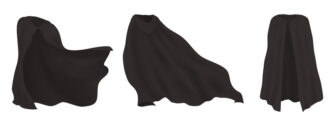The Corvallis Effect and Donor Fatigue

A mysterious student has been attending class at Oregon State University for the past two months enveloped in a big, black bag.
Only his bare feet show. Each Monday, Wednesday and Friday at 11am the Black Bag sits on a small table near the back of the classroom. The class is Speech 113 – basic persuasion.
The professor knows the identity of the person. None of the 20 students do. “Over time”, the professor said, “the students’ attitude changed from hostility toward the Black Bag to curiosity and finally to friendship.”
The year was 1967 and the report is from an AP datelined Corvallis, Oregon. Thus the mere exposure effect was born (or at least interestingly tested). The Mere Exposure Effect: attitudes are positively enhanced by mere exposure or contact to a stimulus object. In other words, familiarity breeds positive associations.
This effect has been studied and tested and tested. It is robust. It applies (mostly) to images, words and yes, people dressed in black bags. Robust? No other explanations have been found; it is an independent effect where more exposure = more positive attitudes towards the object.
Relevance of Mere Exposure Effect for Fundraising
The relevance for fundraising should be clear. Exposure = frequency and more positive attitudes fosters more response. This plays out where your control package is concerned and explains, at least in part, why the control is so hard to beat. The control benefits from nothing innate, just exposure, but that exposure matters, a lot.
But, how can this be coming from Agitator editors and other naysayers when it comes to the “more is more”, volume-driven approach to fundraising? Well, as it turns out, there is another shoe to drop here.
The relationship between exposure and more positive attitudes has a positive slope right up until it starts to turn negative. It’s not linear. Its an upside down U shape. The law of diminishing returns rears it’s ugly head and, in fact there are two of them – not just less marginal, net income but it starts hurting the net as cost per piece exceeds revenue. And of course this doesn’t even account for the long-term, negative effects.
Why Does the Response Curve Turn Downward as Frequency/Exposure Goes Up?
It turns out, donor fatigue is not some strawman raised by the volume merchants to be shot down with their circular “donors don’t get fatigued by good asks, only by crappy asks” retort.
Donor Fatigue is a neurological, biological phenomenon. Repeated and extended exposure reduces the neuron firings as our brain says, “I know this object, no need to put mental energy against it.”
Consequently, as our brain pays less attention to the familiar we have a lower likelihood of responding.
So, what’s the alternative to constant, high frequency blasting of your message that invariably turns a positive, linear relationship (i.e. more begets more) to a diminishing and then downward curve (i.e. more begets less)?
What’s the Antidote?
We’ve written about pulsing ( see Agitator posts here and here) as a/the alternative to take full advantage of the positive upslope and then go dark at the time the curve downward would occur. Rinse and repeat.
It turns out getting back on the quick upslope requires very little exposure. Build brand, get response, turn off the spigot to avoid negative downturn, then turn it on again in equal measures.
Simple. Smart. Better. But the weight and power of status quo and FOMO are powerful. The decision is yours, do you want Corvallis + donor fatigue? Stay the course.
Do you want just Corvallis? Time to change your cadence at a bare minimum.
Kevin



The now-waning influx of cicadas may be a case in point – though I confess I’ve stopped well short of adoration.
[…] donor fatigue real? The Corvallis Effect and Donor Fatigue. New from The […]